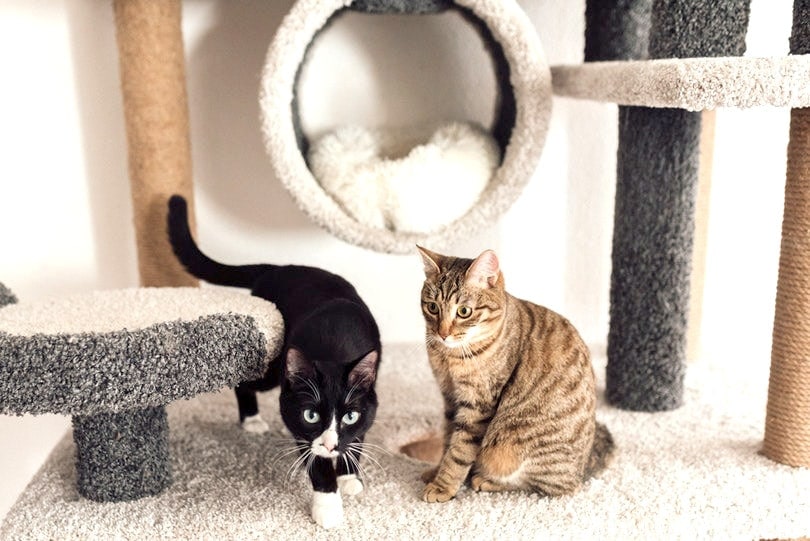10 Tips on How to Start a Pet-Sitting Business (What You Need to Know!)
Updated on

Starting a pet-sitting business is a terrific way to combine your love for animals with earning a living. However, it requires hard work, dedication, and of course, boundless love for our dear four-legged — or two-legged! — companions. But if you are diligent, passionate, responsible, and self-reliant, you will be delighted by the results of your sustained efforts. To give you a boost, here are 10 essential tips for getting your pet-sitting business off the ground.
The 10 Tips on How to Start a Pet-Sitting Business
1. Research Your Local Market and Determine Your Competition
First, analyze your local market to determine the demand for pet sitting in your area. This will give you a better idea of what kind of services you should offer and how to differentiate yourself from the competition.
Start by researching other pet-centric businesses in your area, such as veterinary clinics, pet stores, grooming businesses, etc. If there are several and they tend to get busy, chances are that you live in an area with many pets. Therefore, the demand for your services will be higher.
Knowing the demographics of your region is also relevant. What is the median age of the population? What is the average income of people in your area? The U.S. Census Bureau’s dissemination platform is a great website for finding this data quickly.1 After doing this research, you should be able to determine if you are in a good market to start a pet-sitting business.
Second, analyze the competition. Look for ads in your local newspapers, competitor websites, and social media. There’s a wealth of information out there that will enable you to refine your service offer, establish competitive rates, and develop effective marketing strategies.

2. Consider Getting a Pet-Sitting Certification
Obtaining a pet-sitting certification or training through professional organizations, such as the National Association of Professional Pet Sitters2 or the Professional United Pet Sitters3, is not mandatory when starting your business, but it could give you a head start and set you apart from the competition.
These organizations also provide their members with a wealth of information, resources, and support to help them run successful businesses.
3. Create a Business Plan
A business plan is essential for any new business. It should outline your goals, budget, pricing, marketing strategies, and a realistic timeline for launching your business.
It will also help you stay organized and focused on achieving your goals and make it easier to get financing for your business if needed.

4. Determine Your Pet-Sitting Services
Once you have developed your business plan, the next step is to carefully determine the services that you plan to offer. Consider your target market and the services that they most likely need. This can include anything from exercising pets when owners are at work to providing an affordable alternative to boarding pets in a kennel while on vacation.
Keep in mind that it’s fine to offer a variety of services, but you can also decide to niche your business and only devote your time to specific ones, such as dog walking.
5. Obtain Necessary Licenses and Insurance
Most small businesses require a combination of licenses and permits from federal and state agencies. It’s strongly recommended that you obtain insurance coverage to protect your business and your customers.
Check the licensing requirements in your area, and obtain the necessary permits to operate your pet-sitting business. Failure to do so can lead to heavy fines or even the closure of your business.
You can visit the U.S. Small Business Administration website for more information on state licenses and permits and how to apply.
Note: If you feel a bit lost in all this paperwork, you can always enlist the help of a business lawyer to help you navigate the legal stuff involved in setting up a business.

6. Invest in the Right Equipment
This type of business usually has low start-up costs. Indeed, since most pet-sitting businesses can be run from home, you likely won’t need much more than a laptop, professional software (to manage billing, appointments, etc.), and basics like carriers, leashes, and grooming items. However, if you plan to offer overnight stays, you may need to invest in beds, crates, and other items that will make the pets’ stay more comfortable.
You will probably need a vehicle if you plan to travel to your client’s homes, but that will depend on the types of services that you will be offering.
7. Market Your Pet-Sitting Business
Even if you have a detailed business plan and the best service offering in your area, your business will never take off if you don’t promote yourself! Social media is a prerequisite these days for publicizing any type of business, especially if your target market is millennials and younger generations.
That said, do place ads in local newspapers, and print flyers and business cards and distribute them in your area. Just be aware that the costs associated with these types of marketing strategies are higher than advertising on an online platform.

8. Set Up an Online Presence
Having an online presence for your pet-sitting business will enable you to reach more customers. It typically includes creating a website and setting up social media accounts.
However, while social media is a great way to reach potential customers and build strong relationships with current ones, it’s not everyone’s cup of tea. Feel free to decide how you want to market your services in your area and remember that word of mouth is often the best tactic when developing new businesses, big or small.
9. Create a Network of Pet Owners
One way to promote your services is to network with pet owners, veterinarians, groomers, and other pet-related businesses. This will help you spread the word (for free!) about the services that you offer and find new clients through referrals from people in your network.

10. Provide Excellent Customer Service
Once your pet-sitting business takes off, the work has only just begun! It includes providing exceptional customer service. Be dependable, punctual, and professional in all your interactions with your customers, as this is a sure way to build a positive reputation in this competitive environment.
Also, be sure to respond to inquiries in a timely manner, be available when needed, and provide personalized attention to each pet and their human. In short, you must go above and beyond to ensure that your customers and their pets are happy and satisfied with your services. The prosperity of your business depends on it!
Final Thoughts
With the global pet-sitting market size expected to reach $5.14 billion by 2030, starting a pet-sitting business can be a lucrative and fulfilling venture. But it does take hard work, dedication, and a few sleepless nights in the beginning!
That said, with the right preparation and guidance, you should be able to experience the rewarding feeling of starting your own business in no time! Good luck!
Featured Image Credit: New Africa, Shutterstock












